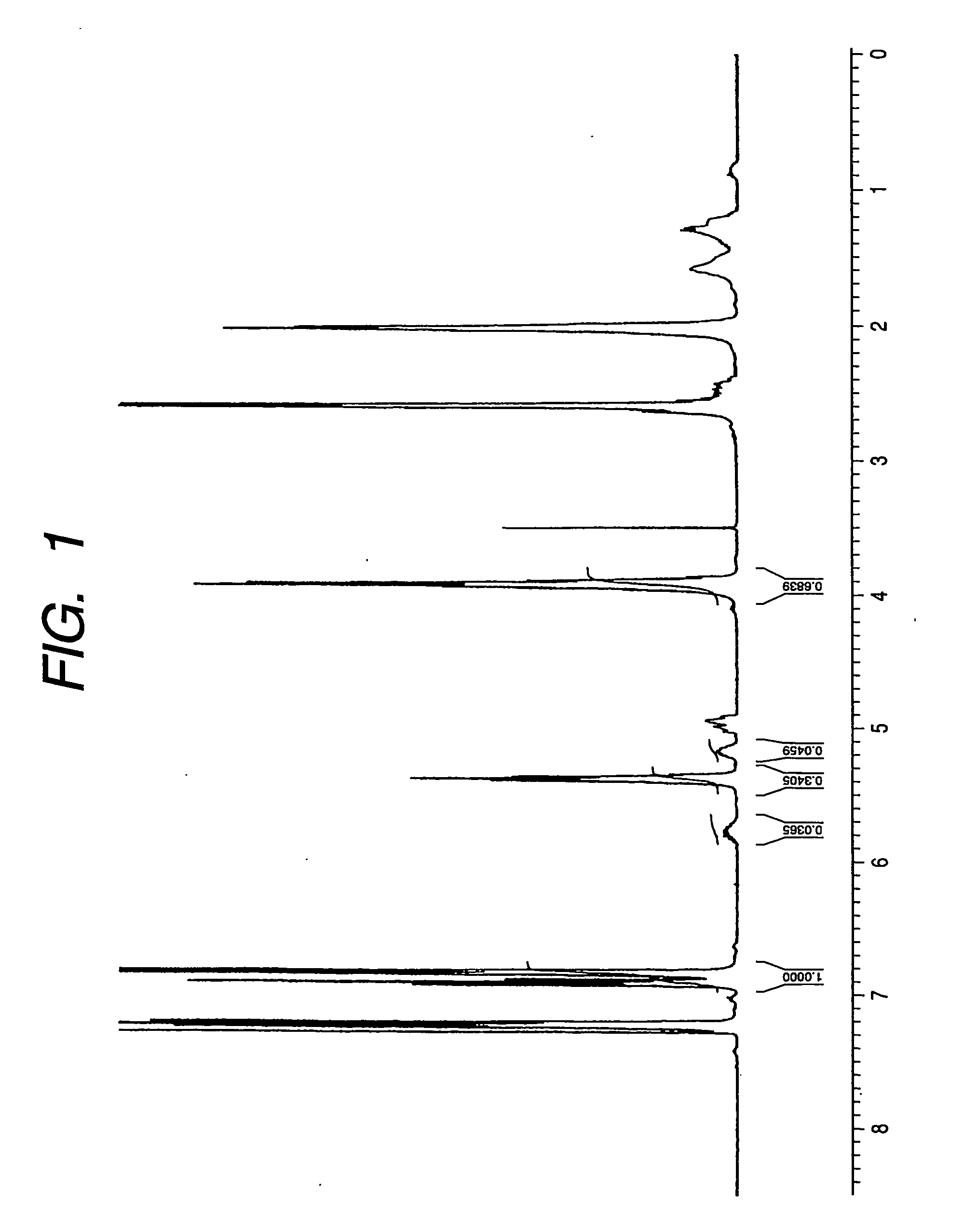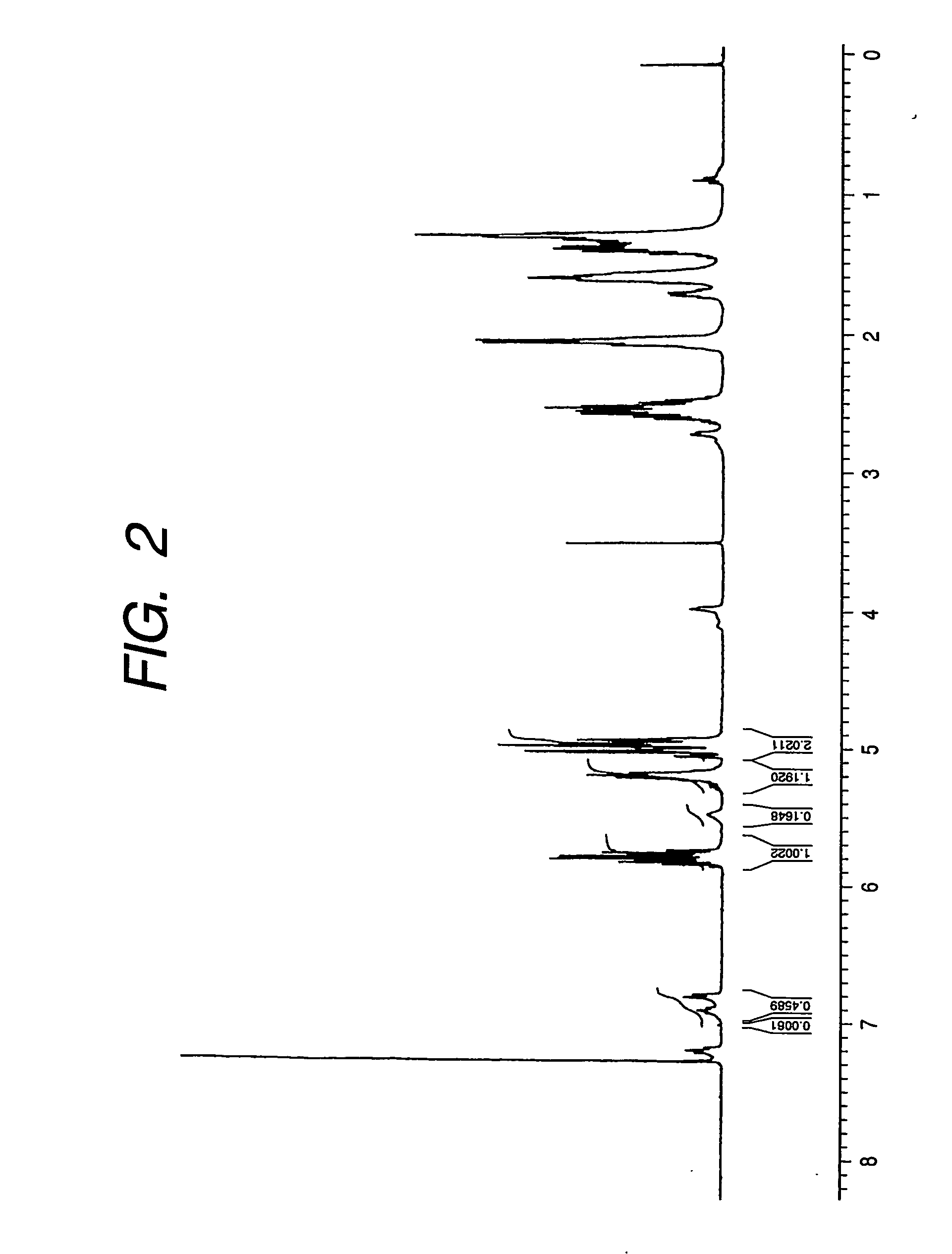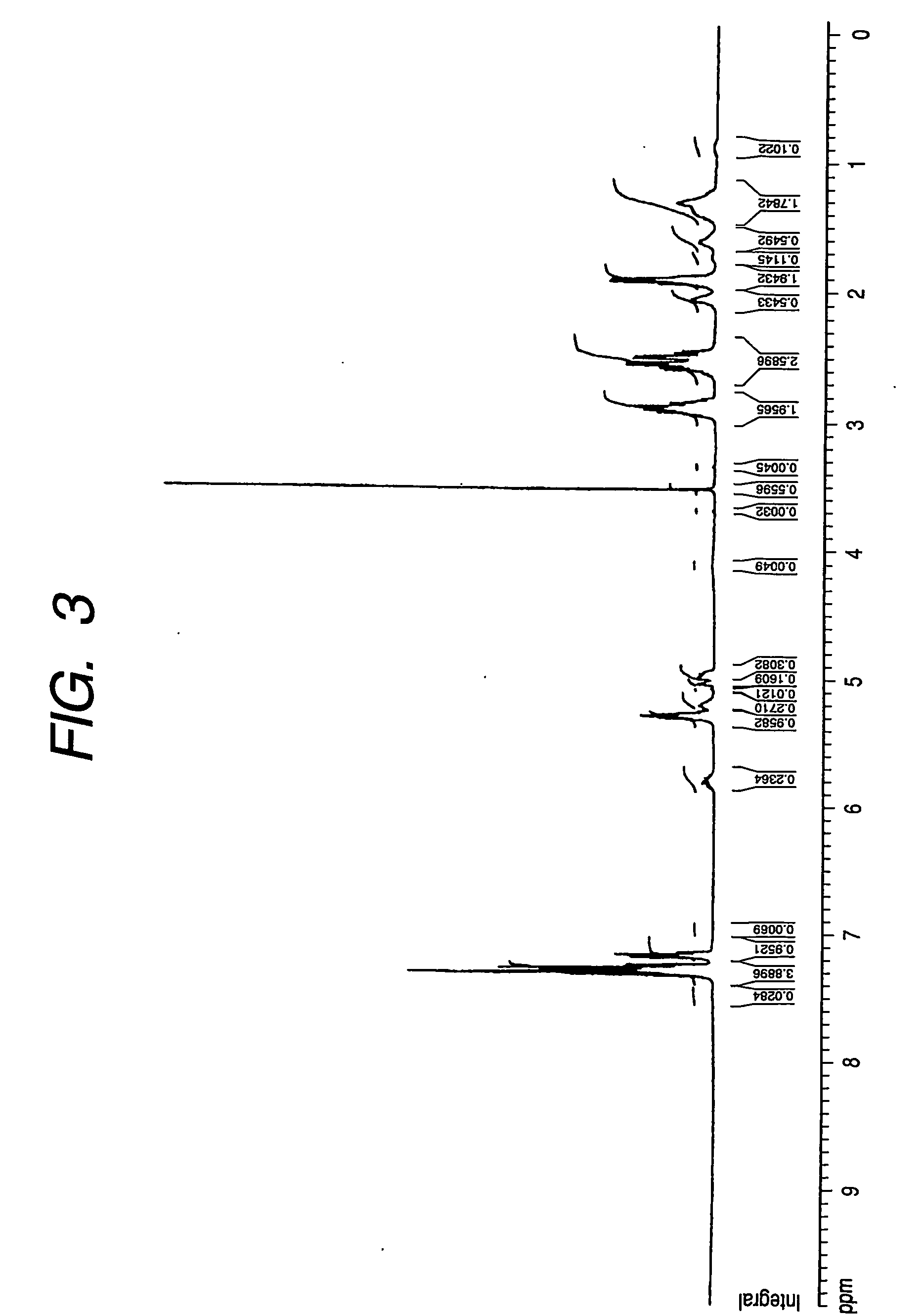Novel polyhydroxy alkanoate copolymer including within molecule unit having vinyl group or carboxyl group in side chain, and producing method therefor
a polyhydroxy alkanoate and copolymer technology, applied in the field of polyhydroxy alkanoate, to achieve the effect of improving the physical properties of the polymer and high reactivity
- Summary
- Abstract
- Description
- Claims
- Application Information
AI Technical Summary
Benefits of technology
Problems solved by technology
Method used
Image
Examples
example 1
[0097] 0.5% of polypeptone (supplied by Wako Pure Chemical Co.), 6 mmol / L of 5-phenoxyvaleric acid, and 1 mmol / L of 10-undecenoic acid were dissolved in 200 ml of an aforementioned M9 culture medium, which was placed in a 200 ml shaking flask, then sterilized in an autoclave and cooled to the room temperature. Then 2 ml of a culture liquid of Pseudomonas cichorii YN2, shake cultured in advance in an M9 culture medium containing 0.5% of polypeptone for 8 hours at 30° C., was added to the prepared culture medium, and culture was conducted for 64 hours at 30° C. After the culture, the cells were collected by centrifugation, washed with methanol and dried. The dried cells, after weighing, were put in chloroform and stirred for 72 hours at 35° C. to extract a polymer. The chloroform extract was filtered, then concentrated on an evaporator, and a solid precipitate formed by an addition of cold methanol was collected and dried under a reduced pressure to obtain a desired polymer.
[0098] St...
example 2
[0102] A desired polymer was obtained in the same manner as in Example 1, except that 5-phenoxyvaleric acid employed in Example 1 was changed to 4-phenoxybutyric acid.
[0103] Structure of the obtained polymer was determined by 1H-NMR and 13C-NMR (FT-NMR: Bruker DPX400 as in Example 1. As a result, the obtained polymer was confirmed being a polyhydroxy alkanoate copolymer including units represented by the following chemical formula (51) (A:B+C+D: others (linear 3-hydroxyalkanoic acid with 4 to 12 carbon atoms and 3-hydroxylalk-5-enoic acid with 10 or 12 carbon atoms)=72:11:15). Also 13C-NMR confirmed the presence of the unit B which is a 3-hydroxy-10-undecenoic acid unit and both of the unit C which is a 3-hydroxy-8-nonenoic acid unit and the unit D which is a 3-hydroxy-6-heptenoic acid unit, but the ratio of the units B, C and D was not determined.
[0104] The molecular weight of the obtained polymer was measured by GPC as in Example 1.
[0105] The obtained polymer weighed (PDW) 0.0...
example 3
[0106] A desired polymer was obtained in the same manner as in Example 1, except that 5-phenoxyvaleric acid employed in Example 1 was changed to 4-cyclohexylbutyric acid.
[0107] Structure of the obtained polymer obtained by 1H-NMR and 13C-NMR as in Example 1 was determined to confirm that the polyhydroxy alkanoate copolymer includes units represented by the following chemical formula (52) (A+others (linear 3-hydroxyalkanoic acid with 4 to 12 carbon atoms and 3-hydroxylalk-5-enoic acid with 10 or 12 carbon atoms):B+C+D=89:11). Also 13C-NMR confirmed the presence of the unit B being a 3-hydroxy-10-undecenoic acid unit and both of the unit C being a 3-hydroxy-8-nonenoic acid unit and the unit D being a 3-hydroxy-6-heptenoic acid unit, but the ratio of the units B, C and D was not determined.
[0108] The molecular weight of the obtained polymer was measured by GPC as in Example 1.
[0109] The obtained polymer weighed (PDW) 0.52 g / L and the number-averaged molecular weight was 154,000.
PUM
| Property | Measurement | Unit |
|---|---|---|
| Density | aaaaa | aaaaa |
| Density | aaaaa | aaaaa |
| Density | aaaaa | aaaaa |
Abstract
Description
Claims
Application Information
 Login to View More
Login to View More - R&D
- Intellectual Property
- Life Sciences
- Materials
- Tech Scout
- Unparalleled Data Quality
- Higher Quality Content
- 60% Fewer Hallucinations
Browse by: Latest US Patents, China's latest patents, Technical Efficacy Thesaurus, Application Domain, Technology Topic, Popular Technical Reports.
© 2025 PatSnap. All rights reserved.Legal|Privacy policy|Modern Slavery Act Transparency Statement|Sitemap|About US| Contact US: help@patsnap.com



